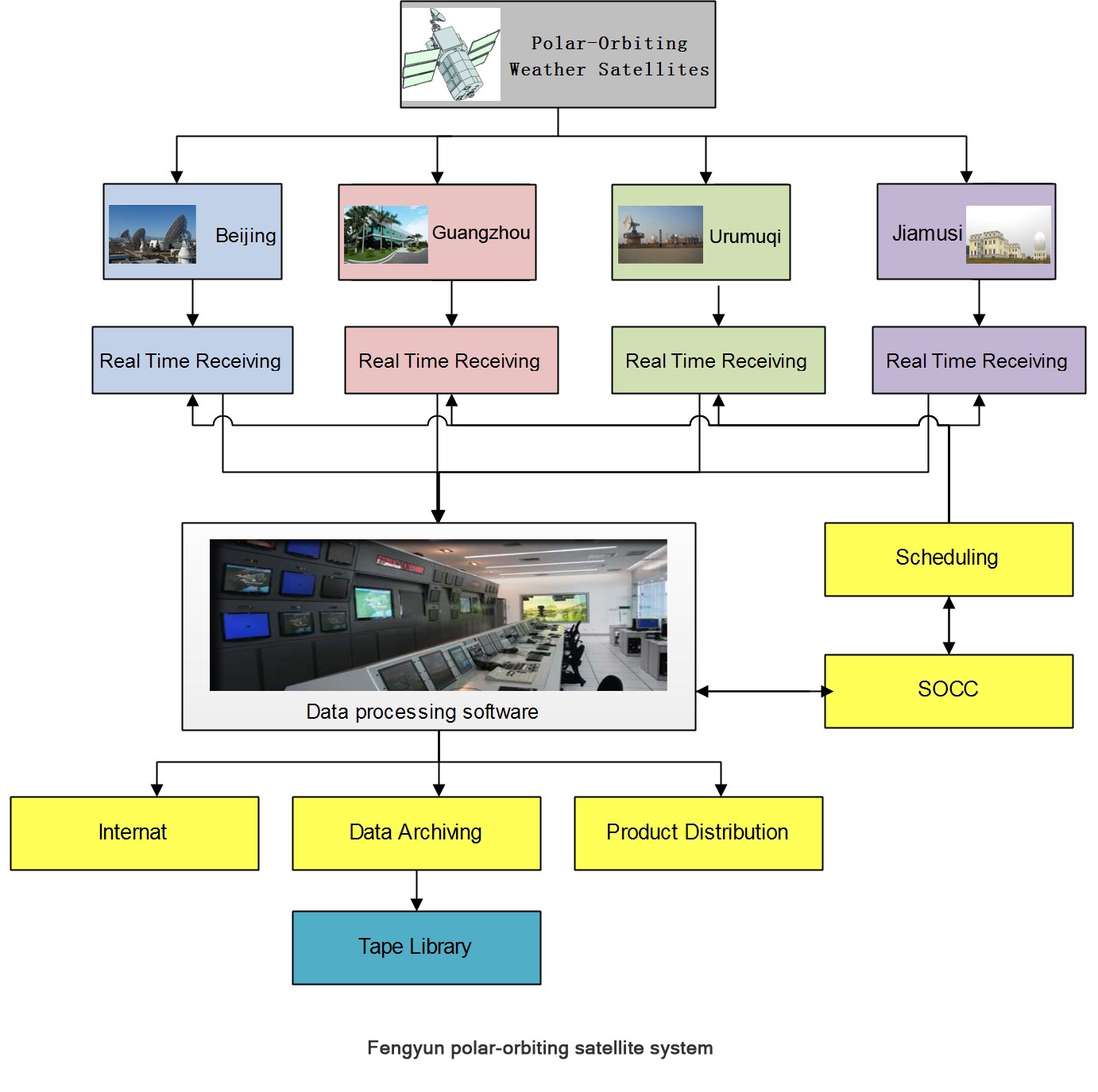Outline of LEO System
FENGYUN LEO GROUND APPLICATION FACILITIES
NSMC operates four polar-orbiting-satellite ground receiving stations in Beijing, Guangzhou, Urumuqi, Jiamusi, respectively. They receive FY-3 L-band and X-band data transmission and relay the data through optical fiber link to Beijing Data Processing Center. According to the contract between CMA and SSC (Sweden Space Center), the latter uses its Kiruna station to receive data dump from FY-3 satellite and re-transmits the data to the Beijing DPC.
The LEO system is supported by several technical subsystems that fulfill the tasks of Data Acquisition, Operation & Control, Data Pre-processing, Products Generation, Quality Control, Computer & Network, Archival & Retrieval Service, Monitoring and Analysis & Service.
The data acquisition from FY-3 is undertaken by the four domestic stations and the SSC. NSMC receives DBS of L-band HRPT and X-band AHRPT transmission data from Fengyun satellites, and receives DBS from a number of LEO satellites operated by international partners.
Also, there are a number of utilization stations set up by users within the country.
The main technical subsystems are physically located in NSMC building, which are featured by the mainframe computer with calculating capacity up to 10 trillion floating-point operations per second, a disk array of storage capacity of 360TB, and an automated tape library that can store 2.5PB of data. The system is accessible to both 10-gigabit highway and gigabit branches.
DATA ARCHIVE AND PRESERVATION
At NSMC, data is stored in three levels, namely, online, near-line, and off-line. The data stored on the disk array that constitutes the file system is the Online Archive. The Near-line Archive is the data stored in the automatic tape library. The Offline Archive is the data stored on the tapes off the automatic tape library and preserved elsewhere in the NSMC building.

Everyday the received data is stored in the disk storage at first, for different durations varying from one week being the shortest to 3 months the longest according to the data category. The products having been stayed in disc for 24 hours will be copied to the tape for near-line archive in the respective pool of the tape library by category. Each product is saved on two tapes, one of which is preserved at an offline site. Operationally, the disk data is cleared off periodically based on category, and the data tapes will be moved to the offline site according to the near-line data keeping period requested for each category.

